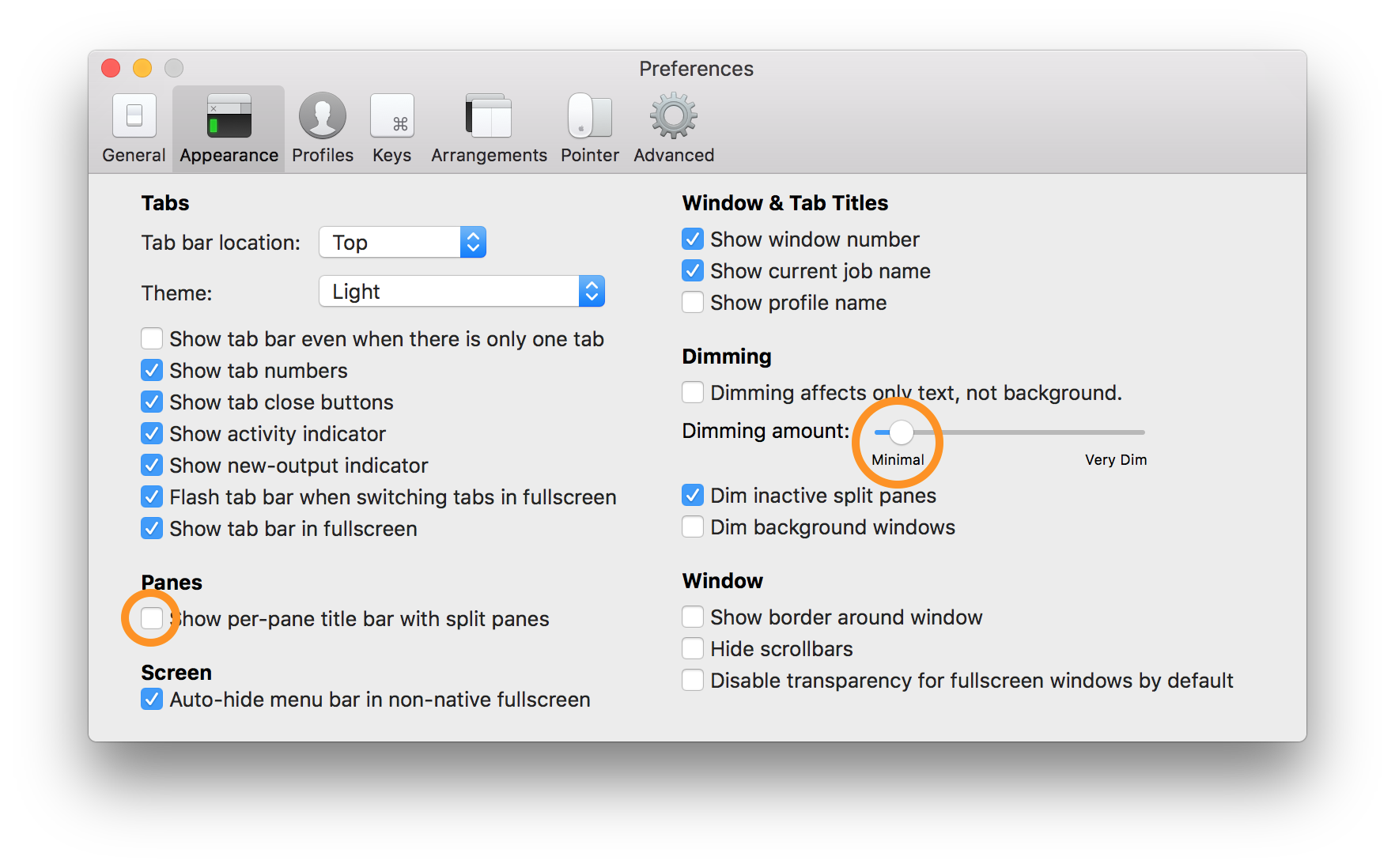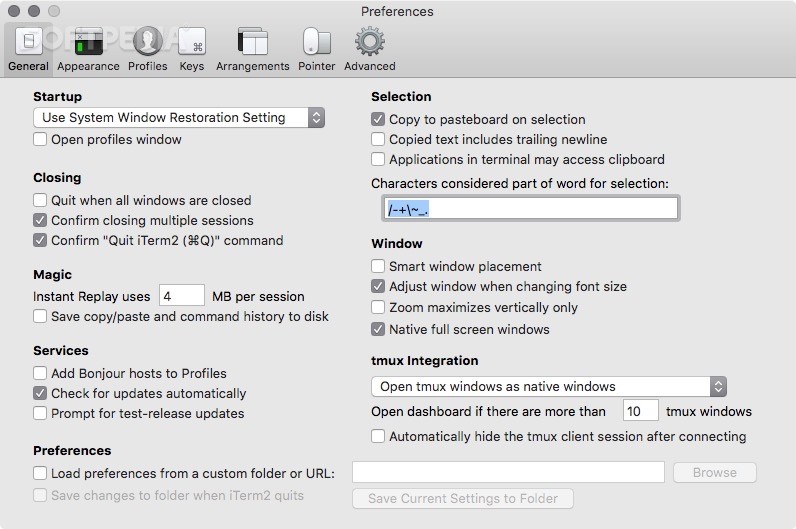
It's rendered overlay make switching tabs slower and the set titles also don't persist when using other applications in your session. I want to advice against using tabset to set the name of the tab itself.


You can see in the example, I also use tabset by Jason Sundram to modify the color of the tab. itomate will set the titles in a way that not even vim or any other applications can change them.
#Customize iterm2 windows
What you do is build an itomate.yaml with contents like this one: version: "1.0"Īnd then you just need to run itomate to spawn your windows and tabs with the right names. You can even run commands automatically to get things going quickly. It allows you to spawn several tabs and panes with persistent tab names. If you already know how your workspace will be, please take a look at itomate. once you enter nvim the title will be lost. Like and share us and help us get spread.Other answers provide no consistent way to override the title.
#Customize iterm2 how to
Did you like the post? Any suggestion and feedback is welcome in the comment section below. Intro How to Customize Iterm2 Terminal Theme on Mac OS Suboptimal Engineer 15K subscribers Subscribe 21K views 2 years ago Developer Productivity In this video, I go over how to change themes on. I would like to know if you were aware of Lolcat previously. You can explore the available options and usage details by checking the man page # man lolcat The lolcat command provides various command-line options to control the color pattern, speed, and other settings.
#Customize iterm2 code
To create permanent alias, you have to add the relevant code (above code for ls -l alias) to the ~/.bashrc file and also make sure to log out and log in back for the changes to be taken into effect.Ĩ. This will enable iTerm2 to read /.zlogin from Prezto on startup. Then change Login Shell to Command and set it to zsh -login. You may create an alias for any command as suggested above. Open iTerm2>Preferences>Profiles>General>Command. You can alias the ls -l command which is used for a long list of the contents of a directory as below. You can also use lolcat with any other Linux command in the pipeline and get colored output in the terminal.įor example, you can create an alias for the most frequently used commands to get command output in a rainbow of colors. # cowsay -f turtle ☛ Tecmint ☚ is the best Linux Blog | lolcatħ. How do I customise iTerm terminal to show me (master) Ask Question. # cowsay -f tux ☛ Tecmint ☚ is the best Linux Blog | lolcat
#Customize iterm2 install
FZF allows you to do fuzzy search for files and folders in the Terminal and Vim, we can use brew to install it. Once cowsay is installed, you can use it with lolcat as shown. Now our Vim editor should have a better look: Step 5. To use cowsay, you must install it on your Linux system. You can also pipe lolcat with cowsay command that creates ASCII art of a cow (or other animals) with a speech bubble containing a message. the current time or working directory, edit your zsh configuration files to set the title in the precmd () function to e.g. # echo I ❤ Tecmint Linux Blog | lolcat -a -d 500Īnimate Text in Linux cowsay Command ExampleĦ. 58 You can enter the following in zsh to set the window title of iTerm2: echo -ne '\e1 this is the title\a' If you want to automate that to insert e.g. To animate text using lolcat, you can use the option -a for animation and -d for duration i.e. # figlet I Love Tecmint Linux Blog | lolcatĥ. Once you have figlet installed, you can use it with lolcat to make the output text colorful as shown: # echo I ❤ Tecmint | lolcat

To use figlet, you’ll need to have it installed on your Linux system. You can also pipe lolcat with the figlet command, which is a utility that creates ASCII art banners and large letters from ordinary text. Lolcat View Shell Script Code figlet Command ExampleĤ. Use lolcat to display codes of a shell script file called tecmint_monitor.sh as shown: # lolcat tecmint_monitor.sh Next, piping lolcat with other Linux commands, for example, ps, date, and cal. To use lolcat, make sure to know the available options and help using the following command. Once you have lolcat installed, you can use it in the terminal by piping text to it or by providing a file as input as shown in the following examples. To use lolcat, you’ll need to have it installed on your Linux system using your default package manager as shown.


 0 kommentar(er)
0 kommentar(er)
